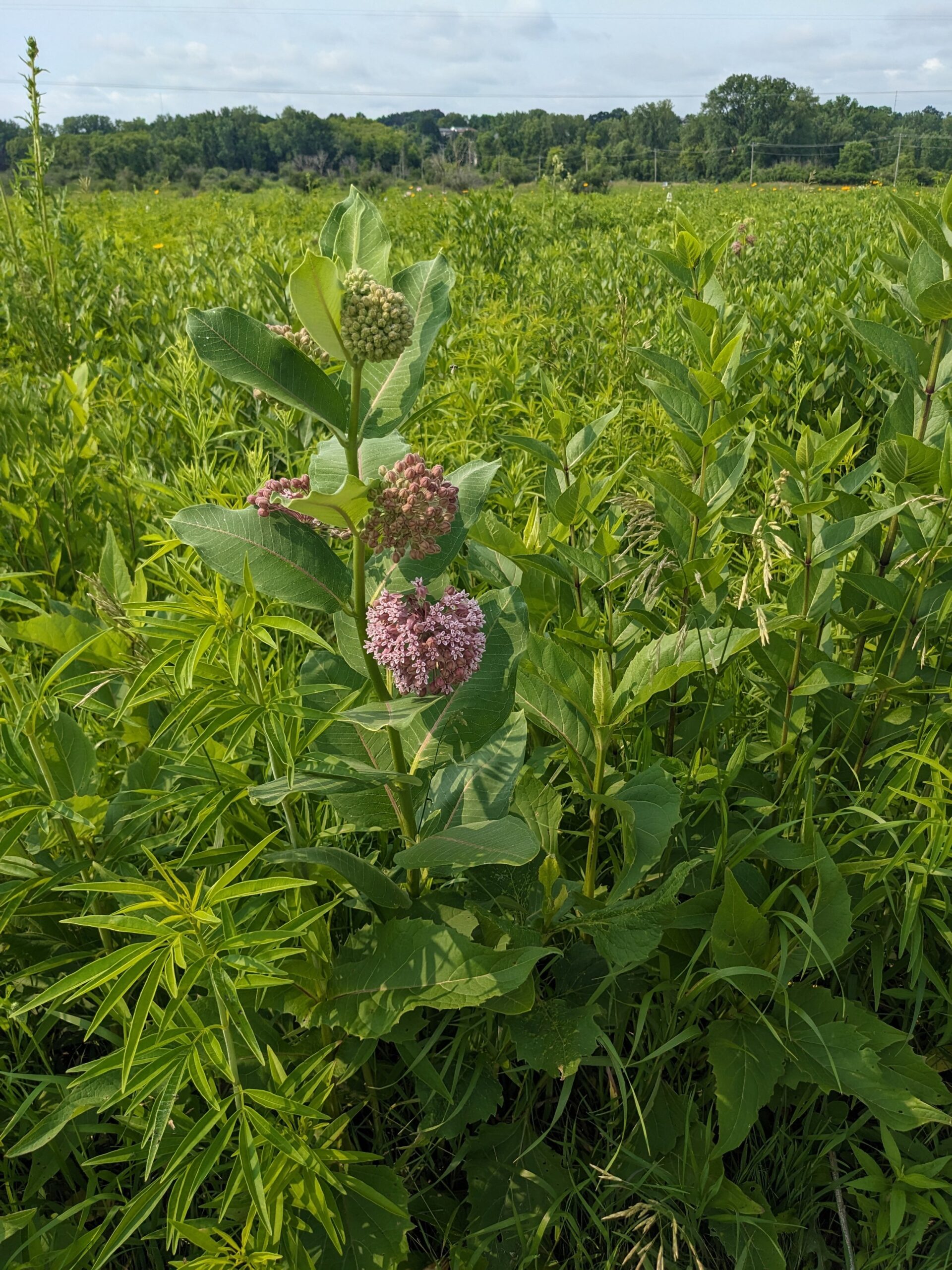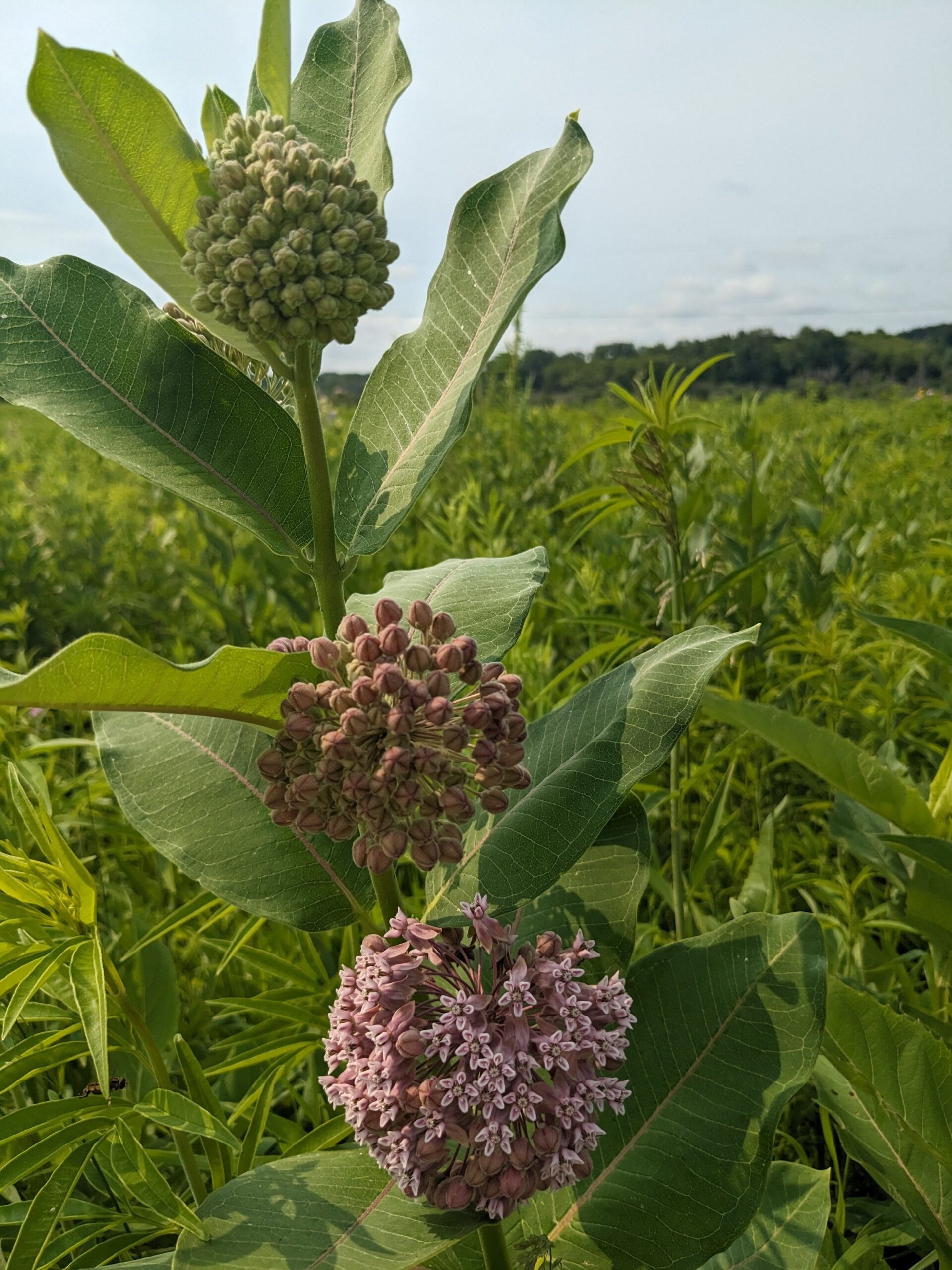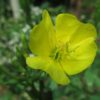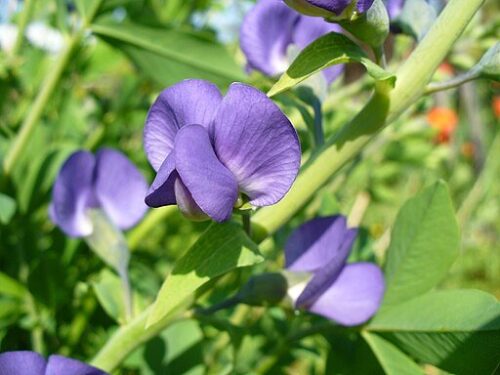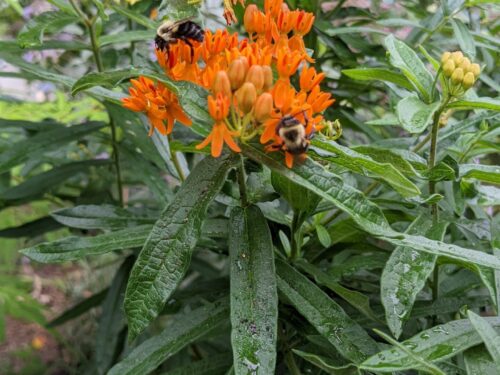Reaching up to 4 ft, Common Milkweed produces ball-shaped clusters of fragrant lavender-pink flowers from June to August. It thrives in full sun and adapts to clay, loam, or sandy soils, tolerating dry conditions. Its tall, architectural form adds structure to borders but spreads aggressively via rhizomes and self-seeding, so allow room for growth.
Ecological Benefits
Serves as the primary larval host for Monarch butterflies and provides abundant nectar for bees, butterflies, and other pollinators. In fall, songbirds like goldfinches may feed on the opened seed pods.



